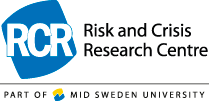Terror and Everyday Life: Mental Re-Constructions, Precautions and Normalization
The aim of this research project is to study how the threat of terrorism affects people’s mental construction of their everyday world and the way they behave.
When sociologists study daily life they usually depict a more or less stable, long-term, subjective reality. People perform their daily affairs without questioning this taken-for-granted reality, not needing to define each situation or to consider alternative ways of behaving. But everyday life is not always stable. Stability can be replaced by instability, predictability by unpredictability. In critical periods of this type, previously well-established systems of relevance must be revised. If during settled times people more or less automatically assess their surroundings to be able to identify pre-defined risks, in unsettled times they do not have the cognitive support of well-established systems of relevance, so they must gradually build up new frameworks of interpretation.
Today, terrorism represents at least a latent threat to the continuity represented by our daily life. However, although terrorism is a global issue, there is only very limited research into how it affects people’s everyday life and their everyday perceptions. The aim of my current research project is to study how the threat of terrorism affects people’s mental construction of their everyday world and the way they behave.
The project includes a case study, carried out in Beirut, Lebanon, in 2005–2006.
During the wave of terror that engulfed Beirut in 2005, many people’s everyday reality underwent a serious change. The aim of the case study was to examine how it affected people’s mental construction of the daily risks they faced and how these constructions subsequently influenced the way people behaved. The study therefore examines to a great extent the relationship between routines and de-routinization and, more precisely, two problems related to this. The first issue deals with the relationship between new and old relevance structures and examines how deep people’s reorientation actually is in situations of this kind. What is considered “abnormal” and what is still seen as “normal” and how are such opinions combined? The other issue deals with the new relevance structures that are developed in unsettled times and to what extent reorientation itself becomes routinized, resulting in new, more or less stable patterns of action. In order to examine people’s reactions and ways of coping with these events, 14 focus groups (n=73) were conducted in targeted areas.
Publications
Borell, K. (2008). Terrorism and Everyday Life in Beirut 2005: Mental Re-Constructions, Precautions and Normalization. Acta Sociologica, vol. 51: 1, ss. 55-70.
Conference Pappers
Borell, Klas. 2007. Living with Terrorism: A Comparative approach. Paper presented at the International Biennial Conference on the Inter-University Seminar of Armed Forces and Society, Chicago, USA, October 15–17.
Borell, K. (2006). The Experience of Living with Terror: Precautions, Perceptions and Bracketing. Paper presented at Hong Kong Sociological Association 8th Annual Conference, Narratives and Perspectives in Sociology: Understanding the Past, Envisaging the Future, Shue Yan College, Hong Kong, 2 December.
Borell, Klas. 2006. Terrorist Bombings and Everyday Life in Zalka, a Beirut Suburb. Paper presented at the First Annual Conference on Human Security, Terrorism and Organized Crime: Realities, Risks and Responses (HUMSEC), Ljubljana, Slovenia, November 23–25.

